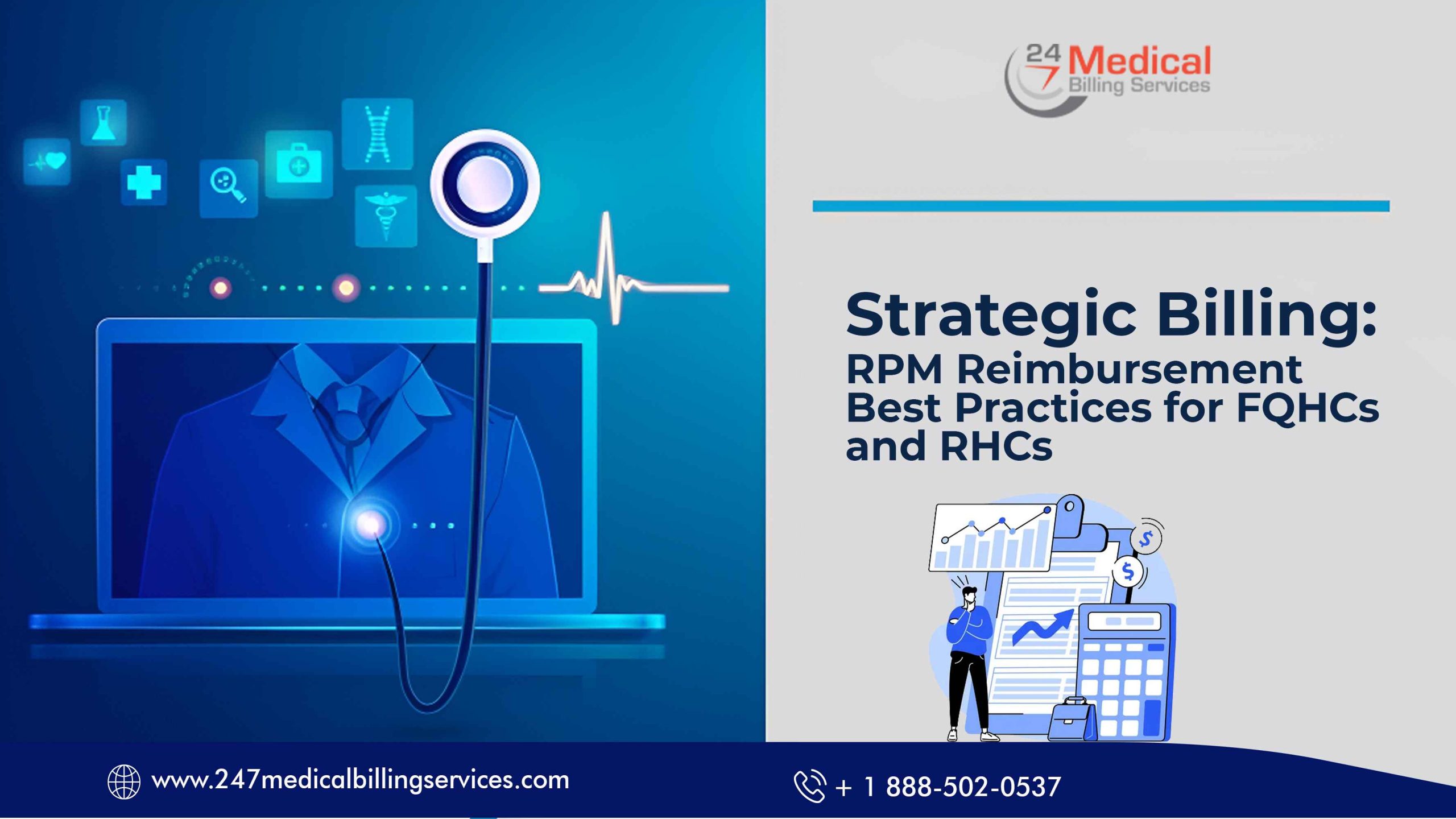
Strategic Billing: RPM Reimbursement Best Practices for FQHCs and RHCs
Did you know that smart billing is key to keeping Federally Qualified Health Centers (FQHCs) and Rural Health Clinics (RHCs) financially sound? With innovations like Remote Patient Monitoring (RPM) on the rise, getting the reimbursement right is crucial for these healthcare providers. Here, we'll dive into RPM reimbursement complexities and share tailored best practices for FQHCs and RHCs. Let's uncover how strategic billing can make a big difference in their financial well-being.
Understanding FQHCs and RHCs Billing Challenges
FQHCs and RHCs serve diverse and often underserved populations, making their financial stability crucial for maintaining community health. The unique challenges they face in the billing process stem from the nature of their services and the populations they serve. According to a recent report by the National Association of Community Health Centers, FQHCs provided care to 31.5 million patients in 2022, showcasing their significant role in the healthcare ecosystem.RPM Reimbursement Basics
Remote Patient Monitoring has emerged as a transformative tool in healthcare, allowing providers to monitor patients' vital signs and health data in real-time. While the benefits are clear, understanding the reimbursement landscape is essential. FQHCs and RHCs can leverage specific billing codes to receive reimbursement for RPM services. Proper documentation of patient data and adherence to coding guidelines are critical for successful reimbursement.To put it into perspective, a study conducted by the Agency for Healthcare Research and Quality (AHRQ) revealed that effective use of RPM resulted in a 50% reduction in hospital readmissions for patients with chronic conditions. This data underscores the positive impact RPM can have on patient outcomes and healthcare costs, making it a valuable service for FQHCs and RHCs to offer.
Coding and Documentation Best Practices
Navigating the world of medical codes can be challenging, but for FQHCs and RHCs offering RPM services, it's a critical aspect of strategic billing. Specific Current Procedural Terminology (CPT) codes are assigned to RPM services, and accurate coding is essential for maximizing reimbursement. Additionally, comprehensive documentation supporting the necessity and effectiveness of RPM services is crucial for successful billing.Ensuring your billing team is well-versed in the specific codes applicable to RPM and the nuances of documentation can significantly impact the financial health of FQHCs and RHCs. Investing in training and resources to keep staff updated on coding changes is a proactive step toward strategic billing.
Compliance and Regulatory Considerations
Compliance with regulatory requirements is a cornerstone of successful billing for FQHCs and RHCs. Given the unique nature of these healthcare entities, adherence to Medicare and Medicaid guidelines is paramount. Non-compliance can result in denied claims, financial penalties, and potential legal implications.Strategic billing involves staying abreast of regulatory changes and ensuring that billing practices align with the evolving landscape of healthcare regulations. This proactive approach safeguards FQHCs and RHCs from compliance-related challenges, contributing to a robust and sustainable financial foundation.
Strategies for Optimizing RPM Reimbursement
Optimizing reimbursement for RPM services involves a multifaceted approach. Implementing technology solutions that streamline medical billing processes and ensure accurate coding is a strategic move. Real-time data analytics can also aid in identifying areas for improvement and enhancing overall billing efficiency.Consider a scenario where an FQHC implemented a comprehensive RPM billing strategy, including staff training, technology integration, and continuous monitoring of coding accuracy. The result was a significant increase in successful reimbursement rates, allowing the FQHC to allocate resources more effectively and expand its remote monitoring services.
Strategies for Team Collaboration and Workflow Optimization
Investing in collaborative strategies and optimizing workflows is a strategic move for FQHCs and RHCs. This involves aligning internal processes, utilizing technology effectively, and fostering a collaborative environment within the billing team. Let's explore how enhancing team collaboration and workflow optimization contributes to the success of RPM reimbursement in these healthcare settings.Outsourcing Considerations
Outsourcing medical billing services is a growing trend among healthcare providers, including FQHCs and RHCs. Partnering with a specialized medical billing service, such as 24/7 Medical Billing Services, can offer expertise in navigating the complexities of RPM reimbursement. Outsourcing allows healthcare providers to focus on delivering high-quality care while the billing company manages the financial aspects, ensuring accuracy and compliance.Patient Engagement and Communication
Transparent communication with patients is an often-overlooked aspect of strategic billing. Educating patients about the benefits of RPM services, the associated costs, and potential out-of-pocket expenses fosters trust and reduces misunderstandings. Clear communication can contribute to timely payments, improved patient satisfaction, and a positive impact on the overall financial health of FQHCs and RHCs.Conclusion
In the dynamic landscape of healthcare, strategic billing is not just a necessity but a key driver of success for FQHCs and RHCs. Remote Patient Monitoring offers unprecedented opportunities, and proper reimbursement is crucial for the financial sustainability of these healthcare providers. As you embark on the journey of strategic billing, consider the expertise and support that specialized medical billing services like 24/7 Medical Billing Services can bring to your practice. By aligning with industry trends, staying compliant, and embracing strategic billing practices, FQHCs and RHCs can navigate the complexities of RPM reimbursement and ensure a thriving future in healthcare.See also: How Does Billing For Remote Patient Monitoring (RPM) Work?

.png)